By Alex Trukan
Without penetration there won’t be any chances created and goals scored. Playing forwards is essential part of attacking football. When talking about getting the ball forwards, we usually mention great passes between and around the defenders. Much less attention is given to the work done by a player who receives that pass. It’s often his clever movement off the ball or supporting run that creates an opportunity for a brilliant pass. This article will focus on work off the ball needed to allow forward passes.
First essential requirement when creating opportunities to play forwards is options of play. It is quite widespread to say that player on the ball ‘should have min. 2/3’ options of a pass. Generally speaking, options should provide him with an opportunity to play forwards as well as back up options to go sideways if required. Options to go sideways do not directly provide an opportunity to penetrate but provide a link to then have another go at playing forwards (sideways to then go forwards).
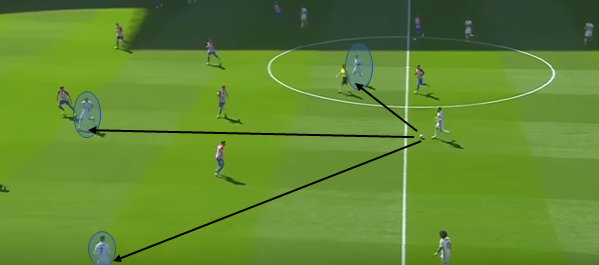
When providing support, it is important that players play on different angles. It can be seen below how two players in front of the ball rotate their positions to provide two passing channels to go forwards. Both of these players look to create a gap between the ball and themselves (so a player on the ball could ‘see their feet’).
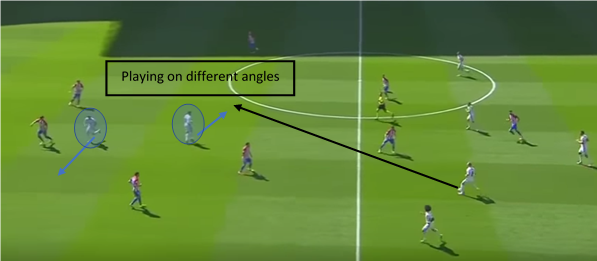
Creating passing channels will often involve movement across the pitch and diagonally. Runs off the ball should look to receive a forward pass between or in behind opposition units. Body position of the runner should be open enabling him to receive a pass on a back foot.
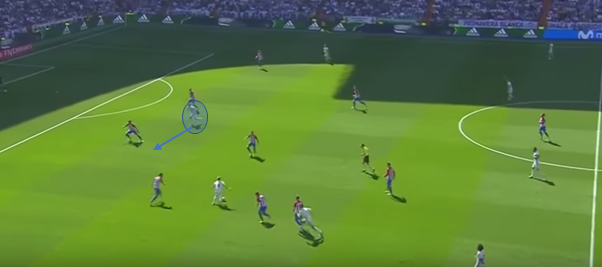
In the final attacking phases, when the opposition is compact, it might be hard to play between units as there will be limited spaces available. This is when movement can be focused on receiving between players within units. For example, striker playing between full back and centre back will be potentially easier to find with a pass than when playing on centre backs’ shoulder.
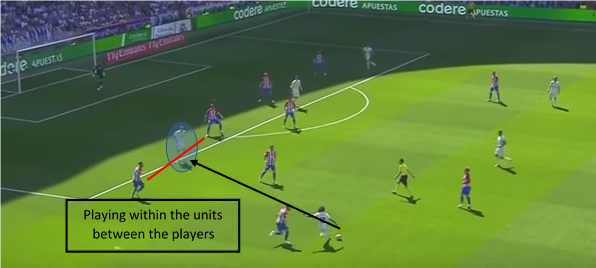
Finally, movement off the ball of one player doesn’t mean that this player will get on the ball. It will often be a third player that will benefit from it. We can see below how a player moving into wide areas creates a forward passing line into the striker. Striker is not static as well, he is adjusting slightly to make the pass possible (getting it around the defenders covering and pressurising the player on the ball).
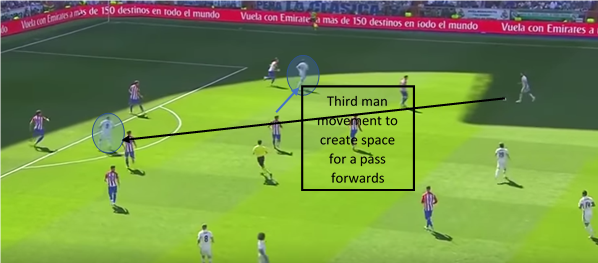
As the pass forward is played, forward runs from a passer will create additional option to combine and play wall passes. This type of play is especially popular when counter attacking.
By Alex Trukan, Development Coach, Nottingham Forest
@AlexTrukan


